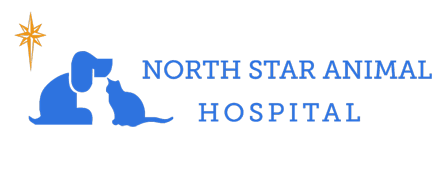Library
-
Struvite bladder stones are one of the more common bladder stones found in dogs. Struvite bladder stones usually form as a complication of a bladder infection caused by bacteria, and if the urine becomes exceptionally concentrated and acidic. The most common signs that a dog has bladder stones are blood in the urine (hematuria) and straining to urinate (dysuria). There are three primary treatment strategies for struvite bladder stones: 1) feeding a special diet to dissolve the stone(s), 2) non-surgical removal by urohydropropulsion (flushing out the stones) and 3) surgical removal. Dogs that have experienced struvite bladder stones will often be fed a therapeutic diet for life.
-
Stud tail, or tail gland hyperplasia, is a condition in which the oil glands near the base of the tail enlarge. This condition causes hair loss, excess accumulation of oils in the skin and on the fur, plugged hair follicles, and secondary infections. It is more prevalent in intact male cats, as these glands are under hormonal control, but any cat can be affected. Poor grooming can be the underlying issue in many cats. Other hormonal imbalances and skin disorders are less common causes. Prognosis is generally good, especially if the underlying cause can be identified and controlled.
-
Stud tail, or tail gland hyperplasia, is a condition in which the oil glands near the base of the tail enlarge. This condition causes hair loss, excess accumulation of oils in the skin and on the fur, plugged hair follicles, and secondary infections. It is most common in intact male dogs, as these glands are under hormonal control, but any dog can be affected. Other hormonal imbalances and skin disorders can also cause this problem. Prognosis is generally good, especially if the underlying cause can be identified and controlled.
-
Administering supplemental fluids can benefit cats with a variety of medical conditions. Giving injections is outside the comfort zone for almost anyone outside the medical profession; however, subcutaneous fluid administration is not nearly as difficult as it sounds. Your veterinary healthcare team will provide you with all the equipment that you will need to administer fluids to your cat. They will go through the steps with you in person. Do not use the fluid bag if cloudiness or discoloration develops in the fluids.
-
Administering supplemental fluids can benefit dogs with a variety of medical conditions. Giving injections is outside the comfort zone for almost anyone outside the medical profession; however, subcutaneous fluid administration is not nearly as difficult as it sounds. Your veterinary healthcare team will provide you with all the equipment that you will need to administer fluids to your dog. They will go through the steps with you in person. Do not use the fluid bag if cloudiness or discoloration develops in the fluids.
-
Many pets initially resist having their claws trimmed. This is partly because their paws are sensitive and partly because they are uncomfortable being restrained for the procedure. By taking the time to do some gentle, systematic training and conditioning, you can teach your pet to relax and accept nail trims as part of their regular health maintenance program.
-
Many pets are sensitive to being restrained for grooming. With slow progress and positive rewards, your pet can learn to accept or even enjoy having their teeth cleaned.
-
Sucralfate is given by mouth and is used off-label to treat ulcers and erosions in the mouth, esophagus, stomach, and upper small intestine. Give as directed. Side effects are uncommon but may include constipation. Do not use in pets that are allergic to this medication. If a negative reaction occurs, please call your veterinarian.
-
Sudden acquired retinal degeneration syndrome (SARDS) causes blindness in older dogs, most often females. The underlying cause of SARDS is unknown and there is no effective treatment for the condition. This handout explains the clinical signs observed in affected dogs, how the condition is diagnosed, and how to support a dog with SARDS.
-
Sugar gliders are small marsupial mammals that are omnivorous eaters, meaning they eat a wide variety of foodstuffs. Items from insects to eucalyptus to gum from the acacia tree may all be consumed to a varying degree. Improper nutrition is one of the most prominent causes of illnesses in sugar gliders. This handout provides the information needed to feed your sugar glider a healthy diet.

